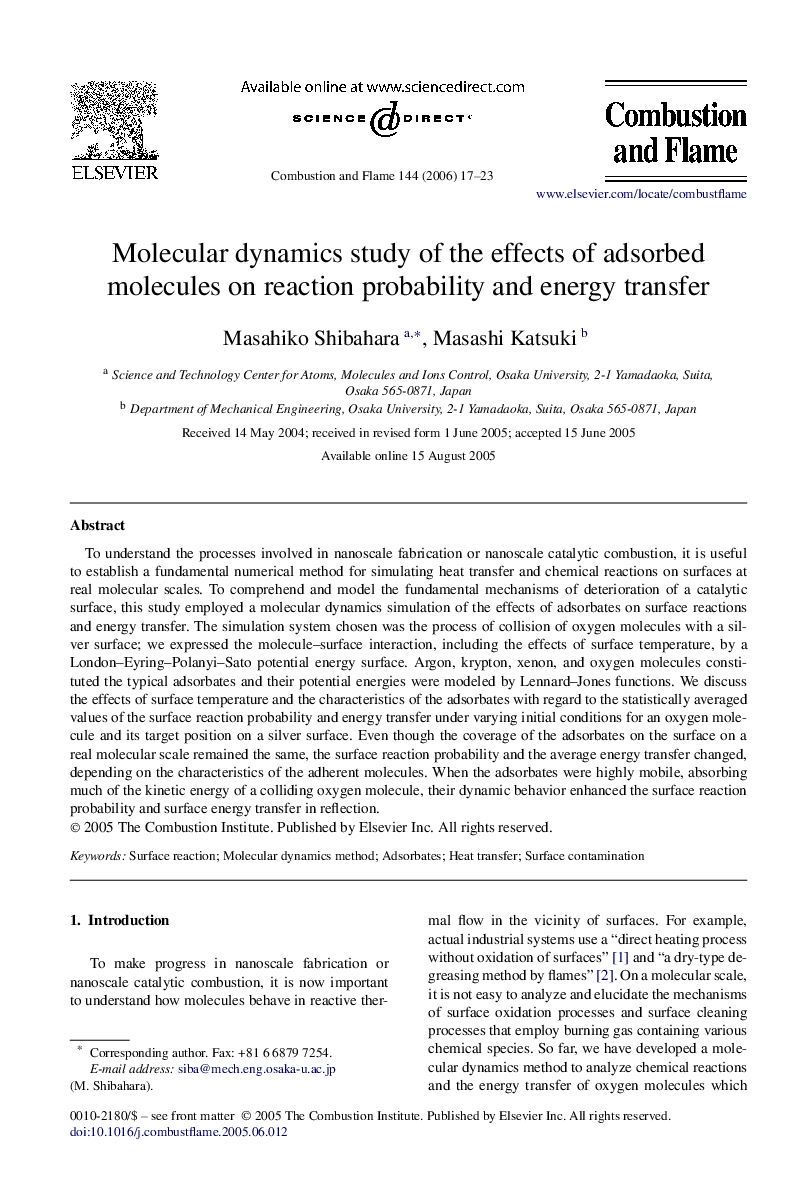| Article ID | Journal | Published Year | Pages | File Type |
|---|---|---|---|---|
| 168307 | Combustion and Flame | 2006 | 7 Pages |
To understand the processes involved in nanoscale fabrication or nanoscale catalytic combustion, it is useful to establish a fundamental numerical method for simulating heat transfer and chemical reactions on surfaces at real molecular scales. To comprehend and model the fundamental mechanisms of deterioration of a catalytic surface, this study employed a molecular dynamics simulation of the effects of adsorbates on surface reactions and energy transfer. The simulation system chosen was the process of collision of oxygen molecules with a silver surface; we expressed the molecule–surface interaction, including the effects of surface temperature, by a London–Eyring–Polanyi–Sato potential energy surface. Argon, krypton, xenon, and oxygen molecules constituted the typical adsorbates and their potential energies were modeled by Lennard–Jones functions. We discuss the effects of surface temperature and the characteristics of the adsorbates with regard to the statistically averaged values of the surface reaction probability and energy transfer under varying initial conditions for an oxygen molecule and its target position on a silver surface. Even though the coverage of the adsorbates on the surface on a real molecular scale remained the same, the surface reaction probability and the average energy transfer changed, depending on the characteristics of the adherent molecules. When the adsorbates were highly mobile, absorbing much of the kinetic energy of a colliding oxygen molecule, their dynamic behavior enhanced the surface reaction probability and surface energy transfer in reflection.
